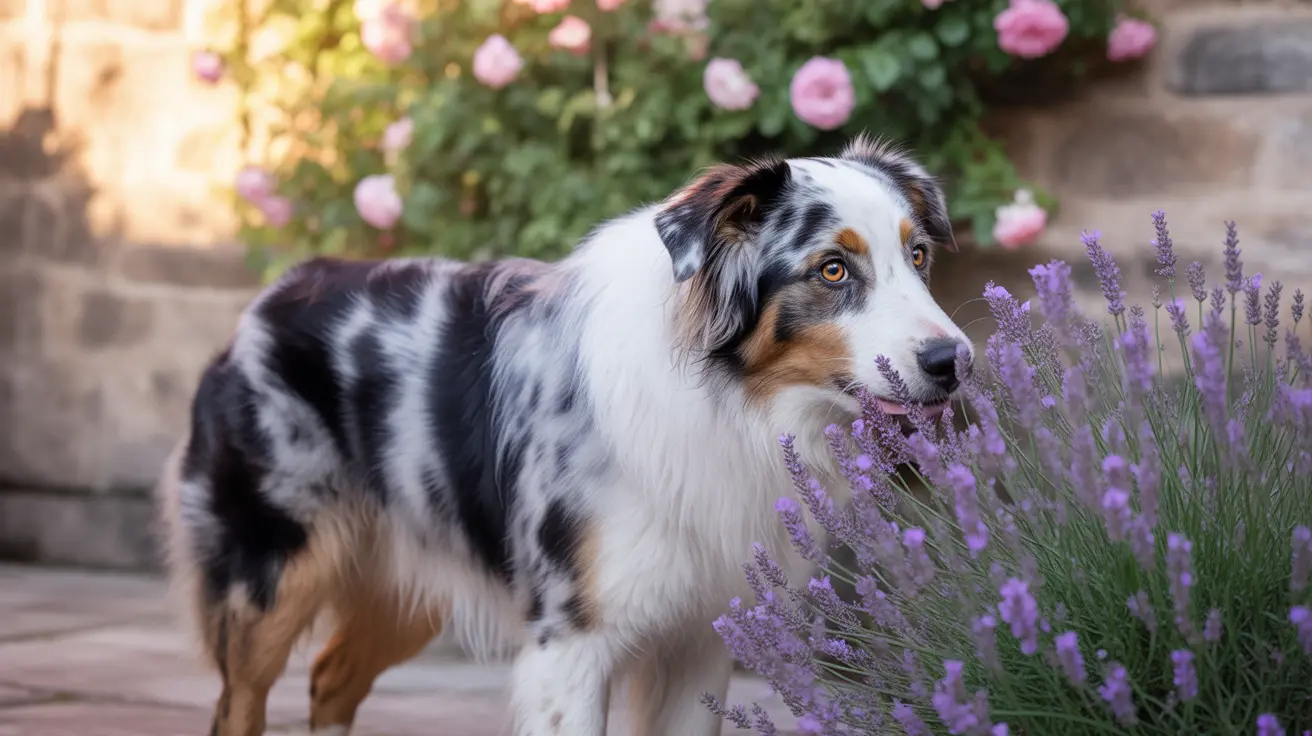Dogs experience the world primarily through their extraordinary sense of smell, which is remarkably more sophisticated than human olfaction. With approximately 300 million olfactory receptors compared to our mere 6 million, dogs possess a sense of smell that's up to 100,000 times more powerful than ours. Understanding what smells dogs like isn't just fascinating – it's key to enriching their lives and strengthening our bonds with them.
The Remarkable Canine Nose
A dog's nose is an incredibly sophisticated organ that shapes their entire worldview. Their olfactory bulb, the part of the brain that processes smells, is proportionally 40 times larger than humans'. This allows them to detect and analyze scents with astounding precision, from the faintest trace of food to subtle changes in human emotional states.
Natural Scents That Dogs Love
Plant-Based Favorites
Research has shown that dogs have clear preferences for certain natural aromas. Lavender stands out as a particularly appealing scent, known for its calming properties. Other favorite plant-based smells include:
- Chamomile
- Blueberry
- Blackberry
- Vanilla
- Peppermint
- Rose
Food-Related Aromas
Not surprisingly, food smells rank high among dogs' favorite scents. Their powerful noses are particularly drawn to:
- Meat-based aromas
- Cheese
- Peanut butter
- Fish
- Fresh-baked treats
The Human Connection
One of the most important scents in a dog's life is their owner's unique smell. Dogs find tremendous comfort in familiar human scents, often seeking out worn clothing or bedding that carries their owner's aroma. This behavior isn't just about familiarity – it's deeply rooted in the bond between humans and canines.
Using Scents for Enrichment and Comfort
Understanding your dog's scent preferences can help create a more enriching environment. Consider these applications:
- Scatter feeding in grass to encourage natural foraging
- Using safe, dog-friendly aromatherapy
- Providing scent-based toys and puzzles
- Creating "sniffari" walks focused on exploration
Safety Considerations
While many scents are enjoyable for dogs, it's crucial to be cautious with concentrated aromatics. Essential oils should never be applied directly to dogs, and any scented products should be specifically formulated for canine safety.
Frequently Asked Questions
What plant-based smells do dogs naturally like and find calming?
Dogs naturally gravitate toward lavender, chamomile, and vanilla. These scents have been shown to have calming effects, reducing anxiety and promoting relaxation in many dogs.
Why do dogs find their owner's scent comforting and seek out clothing with it?
Dogs associate their owner's scent with safety, security, and positive experiences. This familiar smell triggers the release of feel-good hormones in their brain, helping them feel calm and connected even when their owner isn't present.
Are there any food odors that dogs prefer more than others?
Most dogs show a strong preference for meat-based smells, followed by cheese and peanut butter. These preferences are likely tied to the high protein and fat content these foods typically contain.
How can I use scents like lavender safely to help reduce my dog's anxiety?
Use only pet-safe products specifically formulated for dogs, such as calming sprays or diffusers. Never apply essential oils directly to your dog, and always ensure good ventilation in areas where you use scented products.
Do all dogs have the same scent preferences, or do breed and individual differences matter?
While there are some universal preferences, individual dogs and different breeds can show varying scent preferences. Breed history, personal experiences, and individual personality all play roles in determining what smells a particular dog finds most appealing.
Understanding what smells dogs like opens up new ways to enrich their lives and strengthen our bonds with them. By carefully incorporating preferred scents into their environment and daily routines, we can help create more positive experiences for our canine companions while respecting their incredibly sensitive sense of smell.






